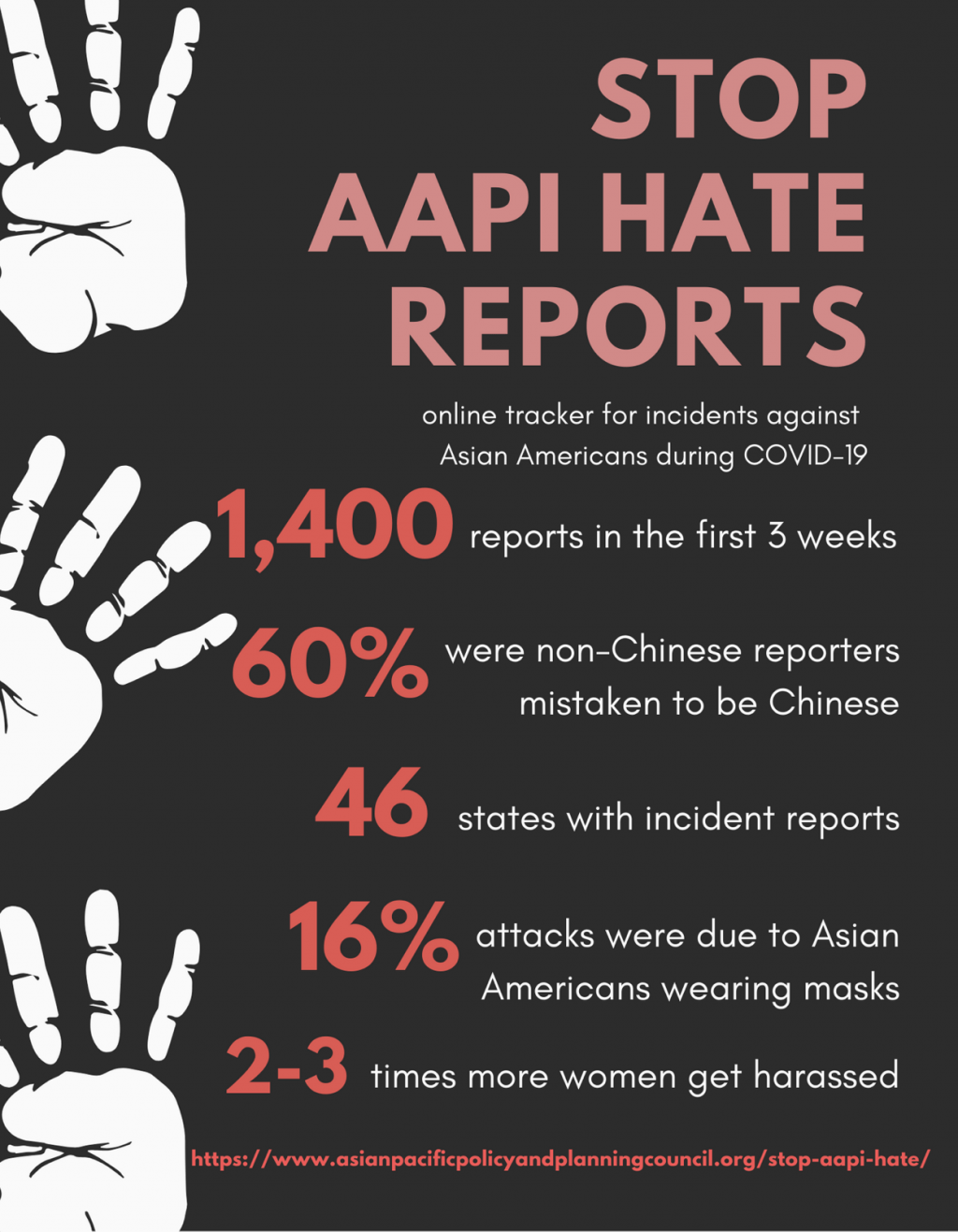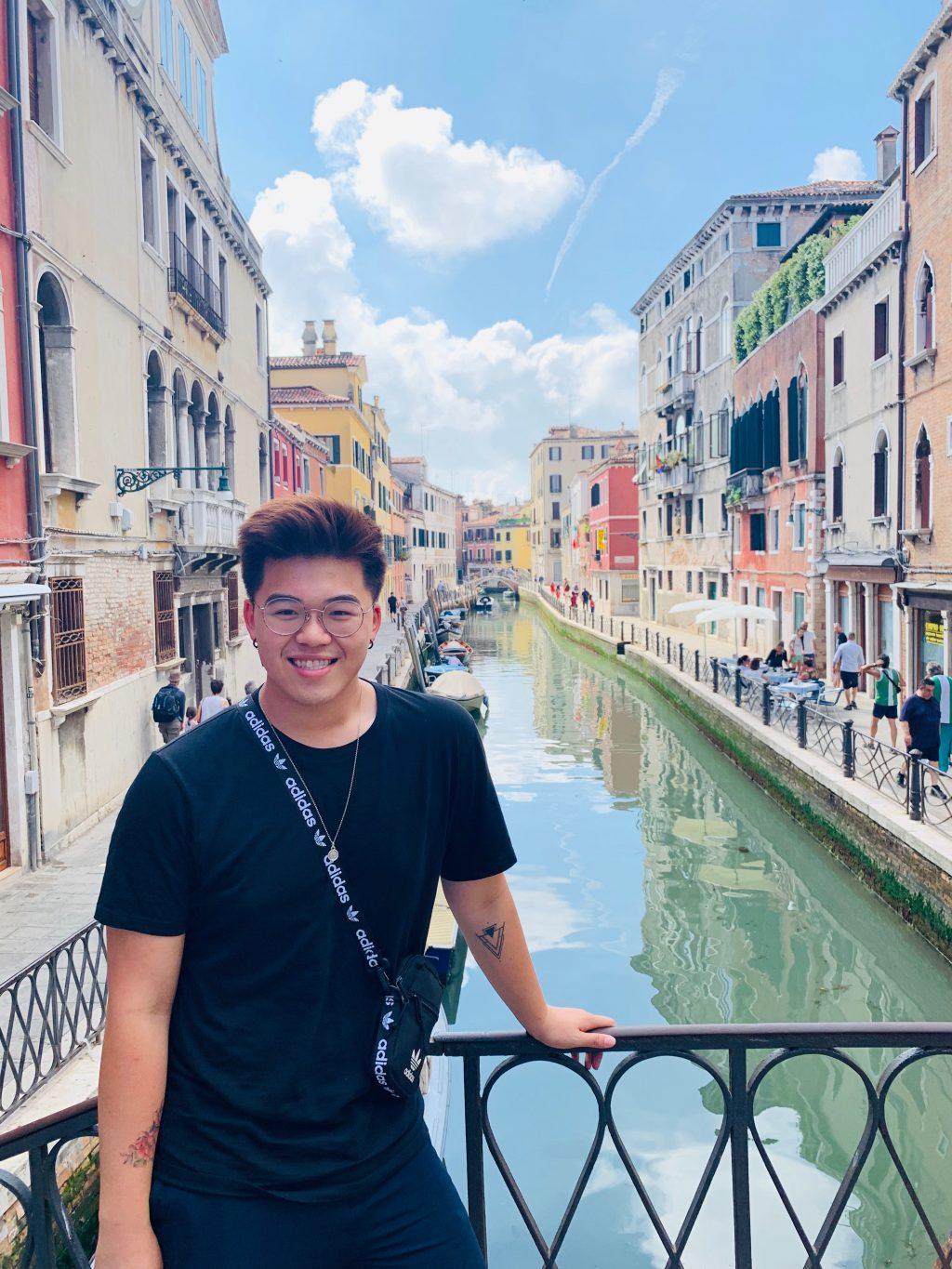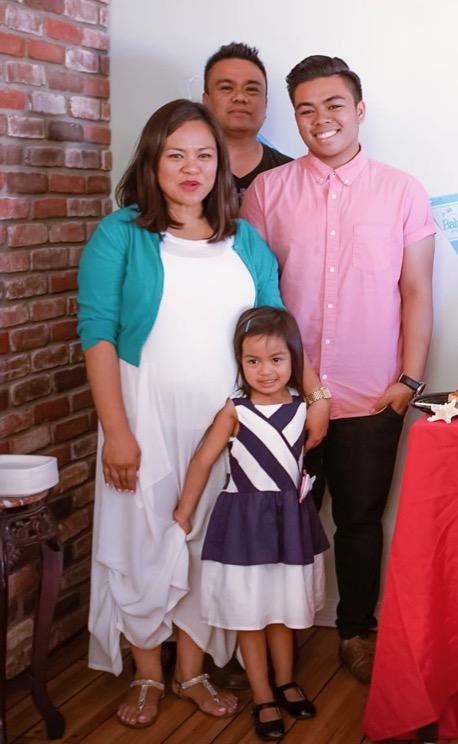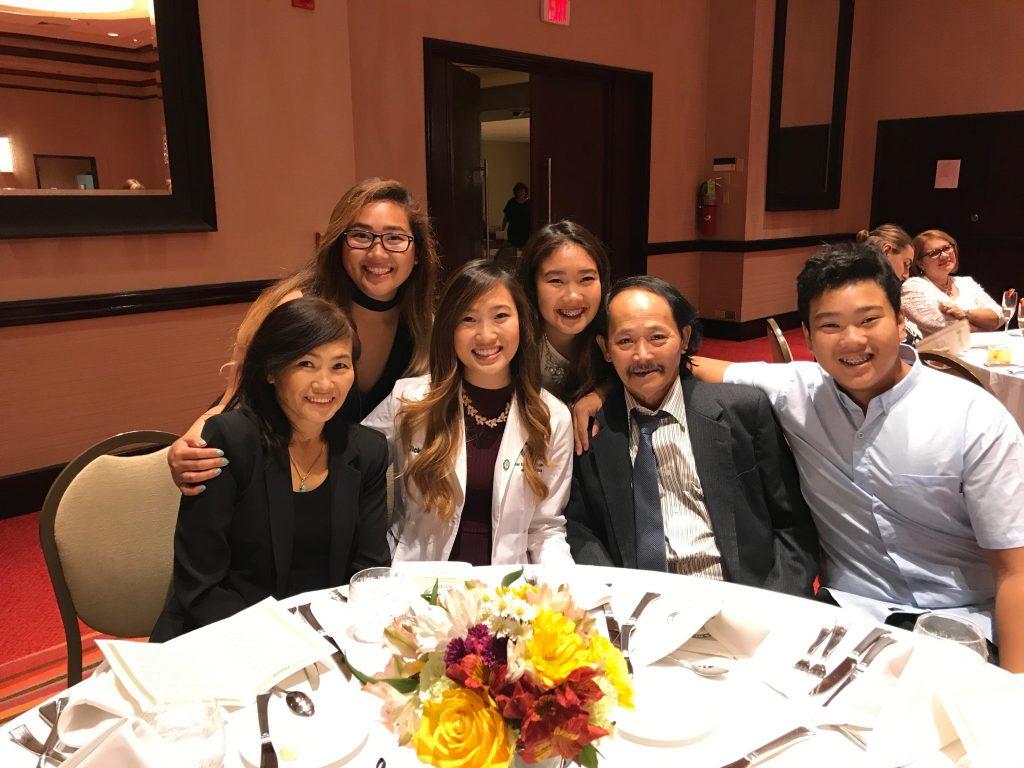Video by Kayiu Wong
Article by Allison Lee
They were afraid for their family.
Christine Yi Suh was on a walk with her four- and six-year-old in Monrovia, California. A man with his dog kept aggressively staring at them to the point where she felt she had to leave the trail to protect her children. On their way home, she heard someone else shout at them. She did not hear exactly what they said and hoped her children didn’t hear either.
“I know for myself and my family, we’re not just dealing with a health crisis — we are carrying an additional layer of grief and fear from the emotional, physical and verbal backlash of racism,” Yi Suh said in a video from Pepperdine’s Intercultural Affairs’ event on xenophobia. Yi Suh is a Pepperdine alumna (’07) and former assistant director of spiritual formation and care with Housing and Residence Life.
Yi Suh is one of many Asian Americans experiencing growing discrimination. Advocacy organizations launched Stop AAPI Hate, an online reporting center for Asian Americans to report incidents of hate, in mid-March. Russell Jeung, who assisted in creating the tracker, said the tracker received more than 1,400 reports in the first three weeks, with incidents ranging from shunning to illegal workplace discrimination to hate crimes.
Garden Grove, California resident Amy Than’s parents don’t speak English. She’s scared they can’t defend or explain themselves — or even call out the microaggressions. Her sister in Florida doesn’t go to the grocery store unless her non-Asian white boyfriend accompanies her.
Jeung, an Asian American Studies professor at San Francisco State University, said his students were most worried about spreading the virus to their families and about economic loss for their Asian businesses.
Telly Wong began the #WashThe Hate campaign. Wong said Chinese delivery men were targeted, attacked, robbed and killed when he was growing up in New York in the ’80s and ’90s. When those instances were reported, nobody stood up for the victims.
“I remember being a kid and my dad owned a small business, and one of our neighbors was a Chinese takeout restaurant, and I just remember being really afraid for my family, for my friends and wondering, ‘How come we’re in this alone?’” Wong said.
Junior Michael Kim was on a walk with his family in Irvine, California, the day he heard about three members of an Asian American family — including two children ages 2 and 6 — who were stabbed outside a Sam’s Club in Texas. Since then, he said he feels on edge in public.
“Because of all this news, I’ve become someone who is judging people before I know them just from looking at them,” Kim said. “It’s gotten the worst out of me like a self-defense mechanism.”
In interviews over two weeks, 11 Asian Americans expressed the growing fear, anxiety and sadness they feel in the midst of COVID-19. The perpetual foreigner, yellow peril and model minority myths are resurfacing alongside historical misconceptions of Asian Americans. The ties of the virus to the Asian American community have ultimately put them at risk of verbal and physical attacks.
Stories About Us, Not by Us
Wong’s 60-year-old friend wore a mask while walking down the street in her neighborhood to buy groceries. Someone went up to her without saying a word and shoved her to the ground, breaking her hand. She was in shock, having lived in New York for 20 years and never experiencing anything like this.

“Do we know for a fact that this was a direct result of xenophobia? We can’t because he just fled after he did that, but those are things that people are worried about right now,” Wong said. “For many Asian Americans, we’re not only worried about our health but our safety from attacks like that.”
Harassment that started in schoolyards quickly shifted to vandalism of Asian-owned businesses and physical assault once social distancing and stay-at-home orders were put in place.
Manjusha Kulkharni, the executive director of Asian Pacific Policy and Planning — one of the organizations that launched the tracker with Chinese for Affirmative Action and San Francisco State University’s Asian American Studies Department — said tracking these incidents is necessary to measure data related to hate and to provide resources for those who file reports.
“People say COVID is the great equalizer; it’s not. It’s building on the inequities already in our system,” Kulkarni said.

Yi Suh recalls the negative portrayals and stories told about Koreans during the Los Angeles Riots. The faces of her community were used to conjure up fear, leading to xenophobia and racial discrimination. The perception of Asians shifted from the convenient model minority to the problematic yellow peril myth. Yi Suh said this shift is unfolding again with Asian Americans in the limelight.
“We’re visible on every media channel and outlet,” Yi Suh said. “We are seen, yet we are still being silenced. We are not the ones telling our own stories.”
The Myths Tied to Asian Americans
The model minority myth is based on Asians naturally succeeding and somehow overcoming racism with hard work, Yi Suh explained. Alhambra, California native Derek Wu said this myth has caused Asian Americans to have been blinded by ethnicity and race, believing they have successfully assimilated into the dominant American society and whiteness.
Wu, who recently graduated from the University of California Riverside with a degree in Asian American studies, said it is important to remember that all people of color are still susceptible to racism and discrimination in the United States.
“I think Asian Americans need to do better in the future of supporting other people of color and their movements in order to further coalition-build to really disassemble the real problem here: white supremacy,” Wu said.

From a city with roots in the civil rights movement, junior Josh Leow said he has witnessed the unspoken discrimination and alienation of those who are different growing up in Memphis.
“The Asian community has always kind of kept to themselves,” Leow said. “What do you expect when there’s that sort of feel of exclusivity even between Caucasian and African Americans?”
Leow’s Asian peers were the smartest in school, working so hard and yet continuing to be viewed as outsiders. This stereotype feeds into the perpetual foreigner idea: to be constantly seen as someone who does not or could never belong. The perpetual foreigner as exotic and a disease carrier is taken to the extreme with the language associated with the disease.
“Using the terms ‘Chinese coronavirus’ or ‘foreign virus’ or ‘Wuhan virus’ — this kind of rhetoric propels the public to see a pandemic in racial terms,” Yi Suh said. “These terms then begin to internalize and instigate blame, racism and hatred against Asians here and abroad.”
The Battle Against the Myths
Wong’s multicultural advertising agency, IW Group, took their experience from their marketing campaign for the movie “Crazy Rich Asians”—the first Hollywood movie with an all-Asian ensemble cast in 25 years — to a purely digital campaign to combat incidents of “discrimination.”
Using #WashThe Hate, Asian American community members and celebrities are posting videos of themselves on social media washing their hands while sharing personal stories about how the pandemic has impacted their lives.
Proud to be join a new campaign @WashTheHate. #Coronavirus-related violence on AsianAmericans is on the rise. We all need to do our part to stop the disease of hate, just like with #COVID19 itself. Post your own video using #WashTheHate on social. Be heard. Be brave. pic.twitter.com/DPVZjveBj0
— Kristen Sze ABC7 (@abc7kristensze) March 18, 2020
Wong said the weaponization of words indirectly laid blame on a community overseas and here in the U.S., lumping Asian Americans and Chinese people in China together.
“We’re made up of individuals with different backgrounds and different experiences, and that’s what we wanted to get across — that we don’t all think and believe the same,” Wong said.
The way Asians have been perceived in the U.S. has been heavily shaped by history. Jeung said the Chinese were blamed for the outbreaks of malaria, leprosy and smallpox and the economic recession in the 19th century. The yellow peril stereotype now connects historical outbreaks to the coronavirus with a source from China.
“The stereotype is that they’re disease carriers and could come in by invading with hordes of people who are nameless and faceless and dominate,” Jeung said.
Jeung’s family settled in Monterey, California, after individuals with anti-Asian sentiments burned down their entire Chinese village of over 200 people during the Chinese Exclusion Act of 1882. The understanding of discrimination has been passed down in families and resurfaced in current circumstances with experiences documented in the online tracker.
“The first trend is that Asian Americans want to share their stories,” Jeung said. “They want to develop a collective voice. They want it to stop. And so they’re using their stories as a way to publicize and let the broader community know what’s going on.”
Senior Christian Abad, who has not experienced direct discrimination, shared how he empathizes as a second-generation Filipino American.
“Even though it’s not me, I feel that pain because my grandfather had to endure some of that stuff and figure out a way to provide for my family,” Abad said. “Knowing that even 50 years ago it happened and it’s still happening now, it still gets me.”

Racism Yesterday, Today and Tomorrow
Wu said racism for Asian Americans has never gotten better — it has just been filtered.
“It will continue and it will prosper because racism against Asian Americans has never gone away,” Wu said. “We’ve only been thinking that it’s been going away, and right now, it’s just showing what it’s what it really has been like.”
As data continues to suggest that racial and ethnic minority groups are disproportionally affected by COVID-19, Jeung said he has seen Asian Americans stand in solidarity with other communities of color.
Kim said the respect for parents in Asian culture could lead them to be more soft spoken. Even if Asian Americans are perceived as a group that does not engage in conflict, Kim encourages Asian Americans to stand up for themselves, raise awareness and break stereotypes.
“These stereotypes — they don’t define us,” Kim said. “We’re all our own person. We’re working to prove that Asian Americans aren’t just nerdy people who play the piano and get really good grades — they can be all kinds of people.”
In addition to the stereotypes that Asians are bad drivers and good at math, Than said COVID-19 adds layers of cultural microaggressions that Asian Americans will have to reverse and undo.
“There’s always going to be conversations that connect Asian people to this, and this is just going to create another stigma, another stereotype,” Than said.

In many Asian cultures, masks are seen as a sign of courtesy and consideration to protect others. Jeung said the stigma behind masks in western cultures and the media’s portrayal of Asians being the only group wearing masks at the start of the outbreak have led to negative effects for Asians.
“The face mask has become a racialized object of scorn,” Jeung said. “You see it all the time in the media — when they depict the coronavirus, they show a mask, and often it’s a Chinese person wearing the mask.”
In 16% of cases reported to Stop AAPI Hate, Asian Americans said they were attacked because they wore a mask in public.
When Abad went to Albertson’s in Calabasas, California, he didn’t want to be the only one wearing a mask. He saw that no else was wearing one, so he left his mask in the car. Later, when he saw people wearing gloves and masks at the gas station, he said he felt much more willing to put his on too.
Kim noticed the empty streets everybody wearing masks when he studied abroad in Shanghai, China, during the outbreak of COVID-19.
“It was interesting to see how cautious people were right away,” Kim said.
As coronavirus cases spread across China, Pepperdine brought the program back to the U.S. in January, where Kim initially thought it would be safer and less severe. Kim went from living in a place where he was part of the majority to returning to a country as a minority, with the media using Asian Americans as easy targets.
“It just breaks my heart to see the ignorance that a lot of people have when you know the virus isn’t something that anybody could have done much about,” Kim said. “It just happened that it broke out in China. … People aren’t really looking at the facts that they’re containing it well in Asian countries, and they’re resorting to the blame game — blaming on skin color and race.”
Kulkarni said news reporters have vocalized that discrimination is not as important as the disease, and she argues that it is all important with life-and-death consequences. She said incidents of hate unfairly affect how Asian Americans feel when they go to the grocery store or take a walk outside their home.
“We are Americanized, and we have as much right to be here and not feel as scared as you do,” Abad said. “You don’t know where we come from — you don’t know where we’re born and raised and what brought us here today. If you were put in our situation and you were given resources we were given, you would be able to understand why we have to live like this.”
_______________________________________
Email Allison Lee: allison.m.lee@pepperdine.edu
Contact Kayiu Wong via Twitter: @kayiu_wong or email: kayiu.wong@pepperdine.edu
